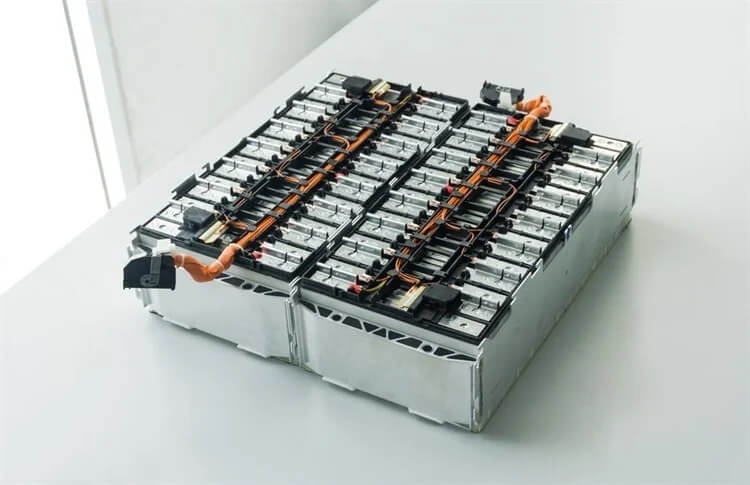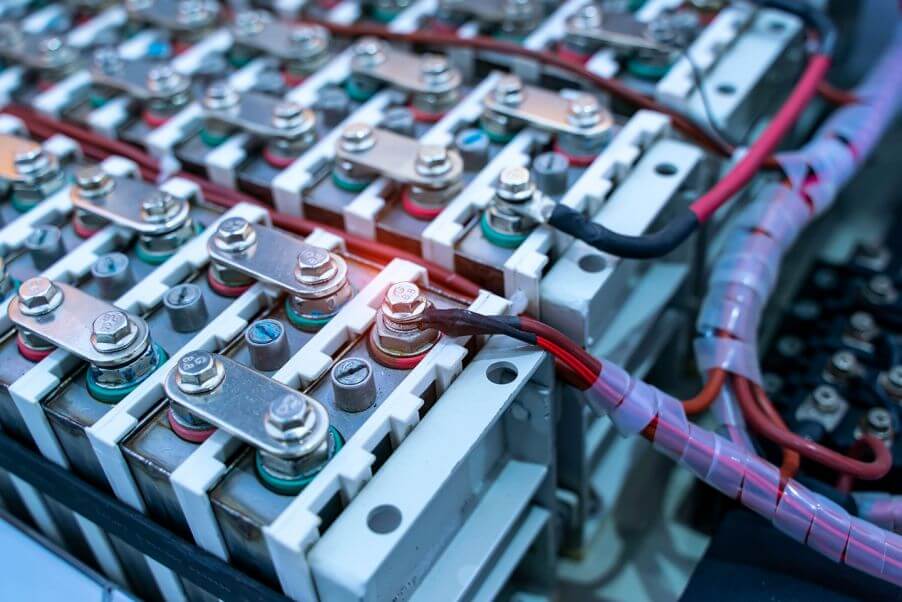Lithium batteries have become an integral part of our modern lives, powering everything from smartphones to electric vehicles. However, their performance can be significantly affected by environmental conditions, especially cold weather. In this article, we will delve into the impact of low temperatures on lithium batteries and explore strategies to optimize their performance in chilly environments.
Lithium batteries operate based on electrochemical reactions, and temperature significantly influences the rate of these reactions. In cold temperatures, the electrolyte and electrode materials exhibit decreased kinetic energy, slowing down the movement of ions and electrons within the battery. This reduced energy transfer results in a decrease in the overall efficiency and output of the battery.
Additionally, low temperatures can impact the lithium-ion migration speed within the battery, affecting the charge and discharge cycles. The sluggish chemical reactions in cold weather contribute to a noticeable decline in the battery's ability to deliver power efficiently.
The capacity of a lithium battery is a measure of the amount of energy it can store. Cold weather adversely affects a battery's capacity due to the sluggish chemical reactions and increased internal resistance. As the temperature drops, the capacity of the battery decreases, leading to a reduction in the total energy that can be stored and, consequently, a shorter runtime for devices or electric vehicles.
This reduction in capacity is often more pronounced in high-drain applications, where the battery is required to deliver a significant amount of power quickly.

Extreme cold temperatures can lead to the freezing of the electrolyte solution inside lithium batteries. The electrolyte typically consists of a lithium salt dissolved in a solvent, and freezing can cause the formation of ice crystals. As water expands when it freezes, this can result in physical damage to the internal structure of the battery, leading to leaks, ruptures, and irreversible damage.
To mitigate freezing concerns, some lithium batteries incorporate additives or alternative electrolyte formulations that are less prone to freezing, providing a degree of resilience in extremely cold conditions. Understanding the freezing points of specific battery chemistries is essential for preventing catastrophic failures in cold weather.
Understanding these aspects of how cold weather affects lithium batteries is crucial for devising effective strategies to optimize their performance in low-temperature environments. Addressing these challenges can ensure the reliable operation of lithium batteries in a variety of applications, from consumer electronics to electric vehicles, even in the harshest winter conditions.
Different types of lithium batteries have specific temperature thresholds at which they perform optimally. Operating a battery outside its recommended temperature range can lead to diminished performance and potential damage. Manufacturers often provide specifications regarding the acceptable temperature range for their batteries, and users must adhere to these guidelines to ensure reliable operation.
Some lithium batteries, such as lithium iron phosphate (LiFePO4) batteries, are known for their better performance in colder temperatures compared to other lithium-ion chemistries. Understanding these temperature thresholds aids users and manufacturers in selecting the most suitable battery for a given application in cold climates.
Cold weather can increase the internal resistance of lithium batteries, affecting the discharge rates. Higher internal resistance means it becomes more challenging for the battery to deliver power quickly. In applications where rapid energy output is crucial, such as electric vehicles or power tools, the increased discharge impedance in cold weather can lead to diminished performance and reduced efficiency.
Properly accounting for these discharge rate variations is essential in designing systems that rely on lithium batteries in cold environments, ensuring they meet the required power demands.
The chemistry of lithium batteries varies between different types and manufacturers, influencing their performance in cold weather. Some lithium-ion chemistries, like lithium cobalt oxide (LiCoO2), may experience more significant degradation in capacity and power delivery in cold temperatures compared to others like lithium manganese oxide (LiMn2O4).
Manufacturers may employ various strategies, such as altering the electrode materials or electrolyte composition, to enhance cold-weather performance. Users need to consider these chemistry variations when selecting batteries for specific applications in colder climates.
Cold temperatures can increase the internal resistance of lithium batteries, impacting their ability to efficiently transfer energy. Elevated internal resistance results in heat generation during charging and discharging cycles, potentially leading to thermal management challenges and safety concerns.
Managing internal resistance is crucial for preventing excessive heat buildup and ensuring the overall safety and longevity of lithium batteries in cold weather. This may involve incorporating thermal management systems or selecting battery technologies with inherently lower internal resistance.
Understanding these factors influencing lithium battery performance in cold weather is essential for both users and manufacturers. Tailoring battery selection and system design to accommodate these considerations ensures optimal performance and safety in applications subjected to low temperatures.
l 1. Integrated Heating Elements:
Battery packs designed for cold weather applications often incorporate integrated heating elements. These elements raise the temperature of the battery to within its optimal operating range, mitigating the impact of cold temperatures on chemical reactions.
l 2. Thermal Insulation:
Implementing thermal insulation around the battery helps retain the heat generated during operation. This insulation minimizes heat loss to the surrounding environment, sustaining a higher internal temperature and enhancing overall battery performance.
l 1. Enclosure Design:
Designing battery enclosures with insulation materials can shield the battery from direct exposure to cold air. This approach is particularly relevant for outdoor applications where batteries may be exposed to harsh winter conditions.
l 2. Heat-Reflective Coatings:
Applying heat-reflective coatings to battery casings minimizes heat absorption from the environment. These coatings help maintain a more stable internal temperature and prevent excessive cooling during exposure to cold air.

l 1. Cold-Tolerant Chemistries:
Opting for lithium batteries with chemistries known for their cold tolerance, such as lithium iron phosphate (LiFePO4), can significantly improve performance in cold weather. These chemistries exhibit better capacity retention and discharge characteristics at lower temperatures.
l 2. Customized Formulations:
Manufacturers may develop specialized lithium battery formulations for cold climates, incorporating additives or modifying the electrolyte to enhance low-temperature performance.
l 1.Preheating Systems:
Implementing preheating systems, either within the device or as part of the charging infrastructure, warms the battery before use. Electric vehicles, for example, often have preheating features to ensure optimal performance in cold weather.
l 2. Temperature-Controlled Charging:
Utilizing temperature-controlled charging systems adjusts the charging rate based on the battery's temperature. This prevents rapid charging in extremely cold conditions, reducing stress on the battery and preserving its long-term health.
l 1. Temperature Sensors:
Integrating temperature sensors directly into the battery system allows for real-time monitoring. This data enables adaptive control systems to adjust heating or insulation as needed, ensuring the battery operates within its optimal temperature range.
l 2. Smart Battery Management Systems (BMS):
Advanced BMS technology can dynamically optimize the battery's performance based on environmental conditions. Smart BMS can adjust charging rates, implement heating or cooling measures, and provide real-time diagnostics to maximize efficiency.
l 1. Cold Weather Packaging:
Packaging lithium batteries with materials that resist extreme temperatures protects them during storage and transportation. Cold weather packaging is crucial for ensuring batteries reach their destination in optimal condition.
l 2. User Guidelines:
Providing clear guidelines to users on how to handle lithium batteries in cold weather, including recommended charging practices and storage conditions, helps mitigate potential issues and prolongs battery life.
Implementing these strategies can enhance the performance, safety, and longevity of lithium batteries in cold weather, making them more reliable for a wide range of applications in challenging environments.
Understanding the factors contributing to reduced capacity in cold weather allows users to anticipate and address these issues proactively.
Monitoring and managing internal resistance can prevent overheating and ensure the longevity of lithium batteries.
Cold weather can pose safety risks, such as the freezing of electrolytes or thermal runaway. Implementing safety measures is crucial to prevent accidents.
Prolonged exposure to cold temperatures can impact the long-term health and life expectancy of lithium batteries. Proper storage and usage practices are essential for maintaining battery longevity.
Regularly monitoring battery temperatures and implementing effective temperature management strategies are essential for optimal performance.
Storing lithium batteries in a controlled environment when not in use can prevent damage caused by prolonged exposure to cold temperatures.
Cold weather can affect the charging efficiency of lithium batteries. Adapting charging procedures to accommodate low temperatures is crucial for maintaining battery health.
Implementing routine maintenance, such as periodic capacity checks and inspections, can help identify potential issues early on and prevent performance degradation.
Explore real-world examples of successful cold weather lithium battery applications, showcasing how industries adapt to challenging environments.
Highlight success stories where companies or individuals effectively addressed cold weather challenges, sharing valuable lessons learned in the process.
Explore current research initiatives and innovations aimed at improving lithium battery performance in cold weather conditions.
Highlight emerging technologies that show promise in addressing the challenges posed by cold weather on lithium batteries.
Discuss industry trends and provide insights into the future of cold-weather lithium battery technology, including potential breakthroughs and advancements.

Recap the key takeaways regarding the impact of cold weather on lithium batteries and strategies for optimization.
Emphasize the significance of understanding and adapting lithium battery use to cold weather conditions, especially in applications critical to daily life.
Conclude with reflections on the continuous evolution of lithium battery technology and the potential for advancements that will further enhance their performance in cold environments.

扫码关注
We use cookies to understand how our audience uses our site.
Renon Power websites use cookies to deliver and improve the website experience. See our cookie policy for further details on how we use cookies. Privacy Policy